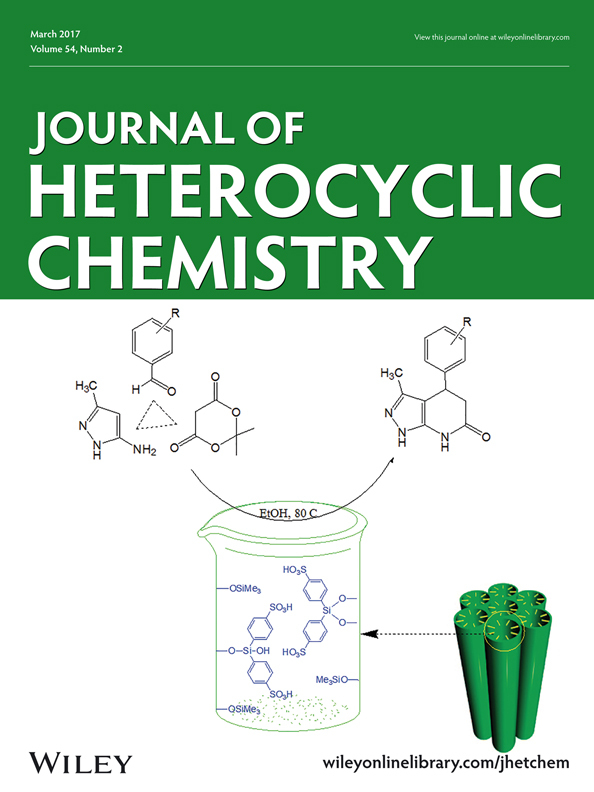Synthesis and Biological Evaluation of New Dipyridylpteridines, Lumazines, and Related Analogues
Abstract
Condensation of 4,5-diaminopyrimidines 2 and 3 with 2,2ʹ-dipyridil (4) afforded 6,7-bis(2-pyridyl)pteridine-2-one analogues 5 and 7, respectively. Analogously, 6,7-bis(2-pyridyl)luamzine derivatives 13, 15, 17, and 23 were synthesized from reaction of 5,6-diamino-2-thiopyrimidines 13, 14, and 22 with 4, respectively, while condensation of 4,5,6-triaminopyrimidines (25) or 5,6-diamino analogue 26 with 4 furnished the 4-amino-pteridine analogue 27 and 28, respectively. Thiation of the new pteridines and lumazines afforded the 4-thio analogues 6, 8, 16, and 24. Treatment of 6 and 8 with methanolic ammonia afforded the 4-isopterine analogues 9 and 10, respectively. Alkylation of 15 with substituted phenacyl chloride furnished 18 and 19, which cyclized to the thiazolo-pteridine derivatives 20 and 21, respectively, on treatment with polyphosphoric acid. Alternatively, 27 was prepared from treatment of 24 with methanolic ammonia under drastic conditions. Condensation of 2 or 29 with 2-oxo-2-(thiophen-2-yl)acetaldehyde oxime (11) gave the 6-(2-thienyl)-pteridine-4-one (12) and 5-chloro-2-(2-thienyl)pyrido[3,4-b]pyrazine (31), respectively. All compounds were evaluated for their antiviral activity against the replication of HIV-1 and HIV-2 in MT-4. Some of the synthesized compounds were tested against the bacterial species, Escherichia coli and Staphylococcus aureus, as well as fungal species, Candida tropicalis and Candida albicans.




